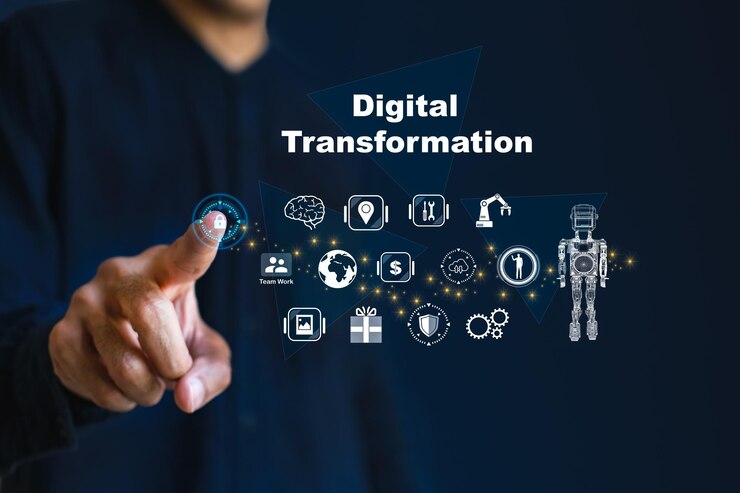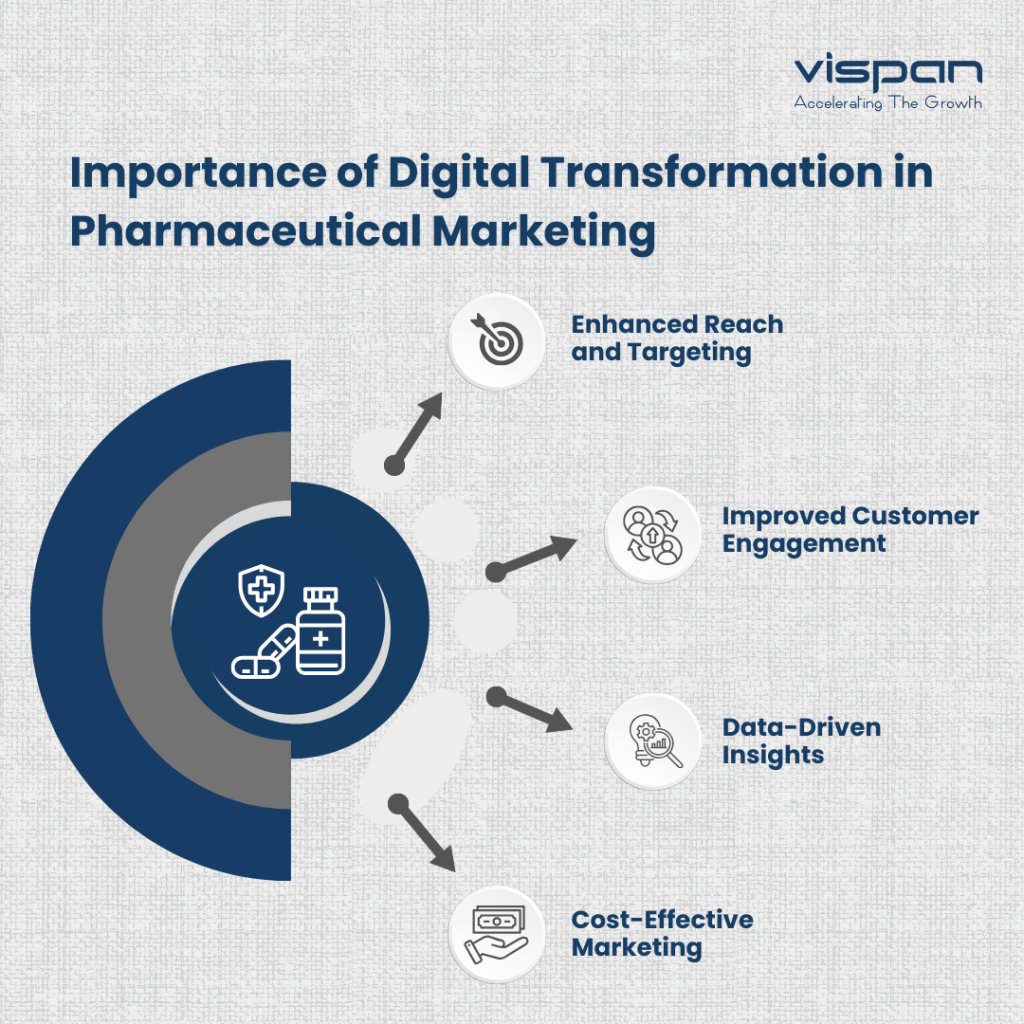
Healthcare is one of the fastest-growing industries. Adapting to new trends and techniques has become essential to stay ahead. Digital marketing in healthcare involves promoting medication products through online channels and technologies to reach and communicate with the key target audience. It is the most convenient way to grow your business in the healthcare sector.
Unlike traditional marketing, digital marketing portrays itself by optimizing social media platforms, and other digital channels. The approach provides much greater reach and the potential for real-time interaction/capture of data for a pharmaceutical company to become sharper at what it does. Digital marketing in the pharmaceutical industry is very important in helping pharmaceutical companies remain competitive, efficient, and effective to the ever-changing needs of their customers.
Importance of Digital Transformation in Pharmaceutical Marketing

1. Enhanced Reach and Targeting:
Digital marketing in the pharmaceutical sector increases a company’s ability to convey the message to more audiences. Tools such as search engine optimization, PPC advertising, and social media will be able to convey the messages of pharmaceutical companies to their desired healthcare professionals, patients, and caretakers.
2. Improved Customer Engagement:
Digital channels allow pharma marketers to engage meaningfully with healthcare professionals and patients. Content marketing, email campaigns, and interactivity-rich websites all support continuous engagement—providing value at each stage with relevant information and meaningful support.
3. Data-Driven Insights:
Digital transformation makes huge volumes of data available for pharmaceutical companies. Analysis of the data helps in understanding customer behavior, working out marketing strategies optimally, and predicting market trends.
4. Cost-Effective Marketing:
The digital marketing techniques are cost-effective as compared to the traditional techniques of marketing. In many instances, online advertisements, emailing, and social media campaigns pay better because the target markets are well-defined and results are measurable.
Key Strategies for Digital Marketing in the Pharmaceutical Industry
1. Optimize for Pharmaceutical Search Ensuring your content ranks well on search engines is critical. Conduct thorough keyword research to understand what terms your target audience uses. Focus on creating high-quality, relevant content that answers common questions and provides valuable insights. Implement SEO best practices, such as optimizing meta tags, using alt text for images, and building quality backlinks.
2. Create Value-Driven Branded Content Content marketing is essential for establishing authority and trust. Develop educational and informative content that addresses the needs and concerns of your audience. This can include blog posts, whitepapers, case studies, and videos. Ensure your content is branded to maintain consistency and reinforce your company’s identity.
3. Harness the Power of Social Media Influencers Collaborate with influencers in the healthcare and pharmaceutical sectors to extend your reach and credibility. Influencers can help spread your message to a broader audience and build trust with potential customers. Choose influencers whose values align with your brand and who have a genuine following in the pharmaceutical industry.
4. Host Engaging Virtual Events and Webinars Virtual events and webinars are excellent ways to engage with your audience and provide valuable information. These platforms allow for real-time interaction and can help establish your brand as a thought leader. Topics can range from new drug launches to patient education and industry trends.
5. Utilize Email Marketing Effectively Email marketing remains a powerful tool for nurturing leads and maintaining relationships with customers. Segment your email lists to send targeted messages based on recipient preferences and behavior. Personalize your emails to make them more relevant and engaging, and include clear calls to action to drive conversions.
6. Integrate Artificial Intelligence (AI) AI can enhance various aspects of your digital marketing strategy. Use AI-powered tools to analyze data, predict trends, and automate tasks such as personalized email marketing and customer service. AI can also help optimize your advertising campaigns by targeting the right audience at the right time with the right message.
7. Personalize and Segment Your Marketing Channels Personalization is key to effective digital marketing. Segment your audience based on demographics, behavior, and preferences to deliver tailored content. Use data-driven insights to create personalized experiences across all touchpoints, from website interactions to social media engagement. This approach can significantly improve customer satisfaction and loyalty.
The Future of Pharmaceutical Marketing in the Digital Age
1. Integration of AI and Machine Learning: AI-powered technologies like chatbots for customer support, predictive analytics for drug development, and personalized treatment recommendations are expected to become mainstream.
2. Telehealth and Virtual Care: The adoption of telemedicine platforms and virtual care solutions is transforming patient-doctor interactions, offering convenience and accessibility.
3. Regulatory Compliance and Data Security: As digital technologies evolve, maintaining compliance with healthcare regulations (e.g., HIPAA) and ensuring data security remain critical challenges for pharmaceutical marketers.
Conclusion
To sum up, Digital transformation is revolutionizing pharmaceutical marketing by offering innovative ways to connect with healthcare professionals and patients. By leveraging data-driven insights, and adopting advanced digital strategies, pharmaceutical companies can navigate the evolving landscape, enhance patient outcomes, and drive business growth in a compliant and ethical manner.



